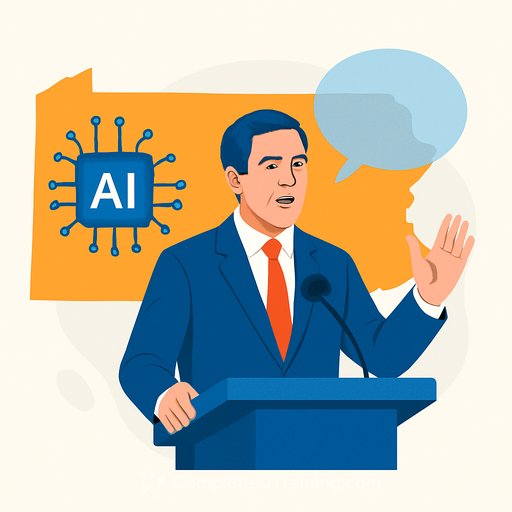New AI regulation blueprint to speed up planning approvals
October 22, 2025 - At the Times Tech Summit, Technology Secretary Liz Kendall set out a new blueprint for AI regulation that relaxes rules inside controlled testing environments to push innovation and growth without losing oversight.
The plan launches AI sandboxes across healthcare, professional services, transport, and robotics in advanced manufacturing. The goal: speed up safe experimentation, surface results faster, and cut friction that stalls delivery.
As Kendall put it: "To deliver national renewal, we need to overhaul the old approaches which have stifled enterprise and held back our innovators. We want to remove the needless red tape that slows progress so we can drive growth and modernise the public services people rely on every day. This isn't about cutting corners - it's about fast-tracking responsible innovations that will improve lives and deliver real benefits."
Why this matters for government teams
The blueprint includes an AI Growth Lab aimed at compressing planning timelines by automating heavy document handling and cross-referencing. Think cutting through an average housing development's 4,000 pages and reducing the 18-month submission-to-approval slog.
It sits alongside a wider "construction business blitz" targeted at saving UK businesses around £6bn annually by trimming red tape and admin. Government has already been piloting AI to chip away at the backlog, including tools that digitise handwritten notes and cross-reference maps and policy documents to build accurate, queryable datasets.
Guardrails, licensing, and accountability
Safety and oversight will be run by tech and regulatory experts, with a licensing scheme that bakes in strong safeguards. The government will open a public call for views on the AI Growth Lab proposals, closing on 2 January 2026. Options on the table include running the programme in-house or delegating to regulators.
For context on the UK's approach, see the policy paper on a pro-innovation framework for AI on GOV.UK: A pro-innovation approach to AI regulation.
What departments can do now
- Nominate 1-2 high-friction use cases for a sandbox (e.g., planning validation, case triage, evidence synthesis).
- Map the data: sources, owners, quality, retention, and lawful bases. Prepare redacted sample datasets for testing.
- Set success metrics upfront: throughput, queue time, error rate, appeal rate, and equality impacts.
- Stand up a small oversight group (policy, data, legal, security, frontline ops) to approve pilot gates and monitor drift.
- Pre-clear procurement routes and DPAs for short, time-boxed pilots with clear exit criteria.
- Plan for auditability: log prompts, model versions, training data lineage, and decision traces.
- Design human-in-the-loop checkpoints for safety-critical decisions and edge cases.
- Align with existing risk frameworks and DPIAs; document mitigations for bias, security, and misuse.
Planning approvals: practical wins to target
- Automate ingestion and structuring of large submissions (PDFs, scans, handwritten notes) with OCR and entity extraction.
- Instant cross-referencing across maps, constraints, policies, development rights, and historic decisions.
- Pre-screening for completeness and policy conflicts before officer review.
- Generate consistent officer reports and applicant feedback with linked citations.
- Expose machine-generated summaries to applicants and consultees to reduce clarifications and rework.
How to keep it safe
- Use sandboxed environments with restricted data access and strict role-based controls.
- Prefer explainable approaches where decisions affect rights or entitlements; require rationale visibility.
- Enforce redaction, pseudonymisation, and minimisation by default in training and inference.
- Test for bias across location, applicant type, and development category; publish summary findings.
- Run security testing on models and integrations; monitor for prompt injection and data exfiltration.
Key dates and next steps
- Now: Identify pilot candidates, assemble oversight group, and prepare datasets.
- Q4 2025: Engage with the public call for views; align your pilots with proposed safeguards.
- By 2 January 2026: Submit your department's feedback and evidence.
- Post-consultation: Expect formal guidance on licensing, reporting, and regulator roles.
Upskilling your team
If your unit needs fast, practical training for AI oversight, prompt workflows, or automation, see curated options by role: Complete AI Training - Courses by Job.
Your membership also unlocks:






